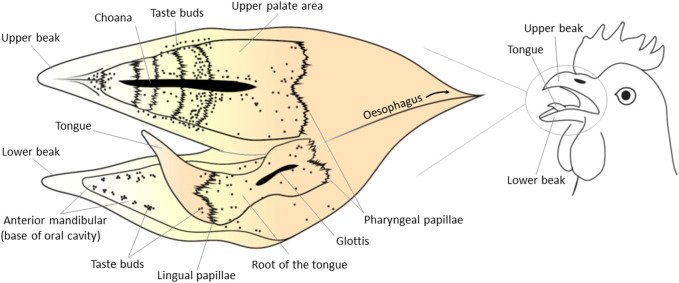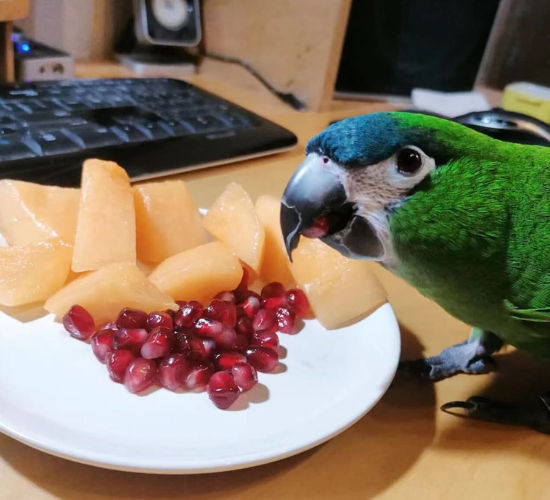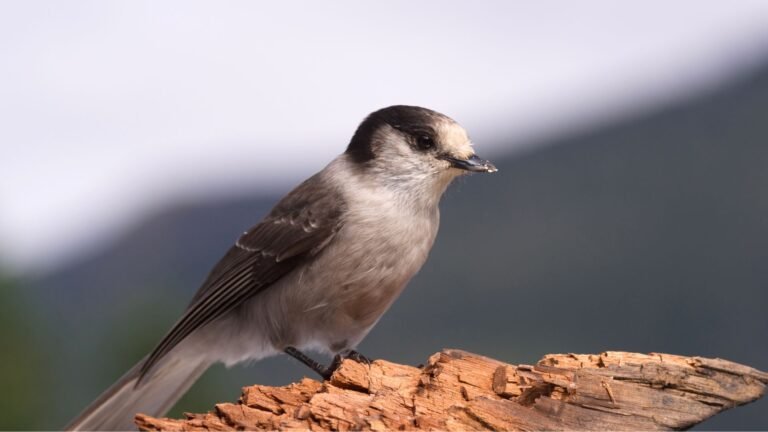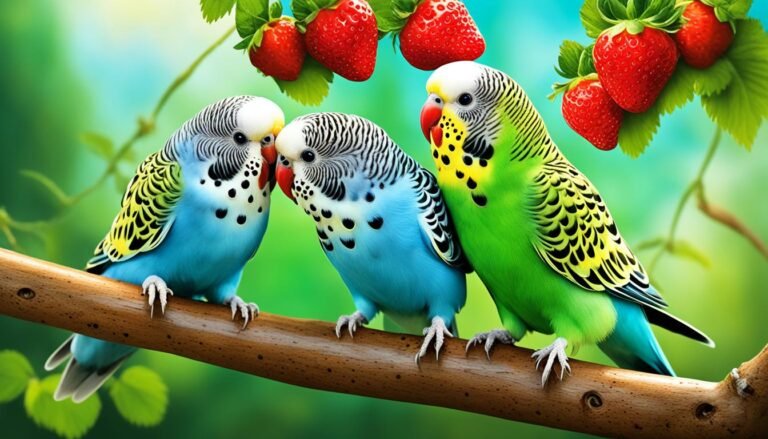Can Birds Taste?

For a long time, it was widely believed that birds had little or no sense of taste. However, recent scientific studies have challenged this notion, revealing that birds can indeed taste to varying degrees across species, albeit in a different way than mammals.
Evidence That Birds Can Taste
Birds, like other animals, have taste buds that allow them to perceive different flavors in their food. The evidence that birds can taste comes from various scientific studies and observations. For example, research has shown that birds have a relatively small number of taste buds compared to humans, but they are still able to detect certain flavors such as sweet, sour, bitter, and salty. This indicates that birds do have the ability to taste and distinguish different types of food.
Okay, now that we know that birds can indeed taste let’s try to dive a little deeper to better understand and leanr about birds sense of taste.
Can Birds Taste: Behavioral Studies
One of the earliest and most compelling evidence for avian taste perception came from behavioral experiments observing the food choices and feeding behaviors of different bird species. As early as the 1970s, studies showed that ducks could distinguish between good and spoiled peas based on taste alone, rejecting the spoiled peas even when both appeared visually identical. This indicated that ducks could detect flavors associated with food deterioration.
More recent studies have revealed taste discrimination abilities in other avian groups as well. Hummingbirds, for example, can detect differences in sugar concentrations and preferentially feed on higher concentrations when given a choice. This suggests they can taste sweetness and may use taste to identify energy-rich floral nectars. Shorebirds like sandpipers have also been observed using their taste buds to locate prey items, rejecting inedible objects placed in their bills.
You might also like: Can Birds Eat Meat?
Molecular Biology Studies
While behavioral evidence demonstrated that birds use taste cues in feeding, molecular studies have provided insights into the underlying biological mechanisms for taste perception. Despite having far fewer taste buds than mammals, birds possess the genetic machinery for detecting basic tastes like sweet, sour, salty, bitter and umami.
Researchers have identified taste receptor genes in the oral cavities of birds that are homologous to those found in mammals. Some of these receptors appear to have undergone adaptive evolution to suit the specific dietary needs of certain bird groups. For instance, hummingbirds and nectar-feeding birds have an exceptionally high number of receptors tuned for detecting sugars compared to insect-eating species.
Not only do birds possess taste receptors, but these receptors are also functionally coupled to signaling pathways in the brain, indicating that taste information is indeed being processed by the avian sensory system. This molecular evidence, combined with the behavioral studies, provides a strong case that birds can perceive basic taste qualities.
Variation in Taste Perception
While the evidence clearly shows birds can taste, there appears to be significant variation in taste capabilities across different avian lineages. This variation seems to be linked to the dietary ecology of each species.
Generally speaking, birds that rely more heavily on taste cues for identifying food sources tend to have more taste buds and a more refined sense of taste. Insectivorous birds like starlings have a relatively high number of taste buds, which may aid in detecting bitter compounds produced by toxic insects. In contrast, granivorous birds like pigeons that feed primarily on seeds have fewer taste buds, presumably because taste is less critical for their dietary choices.
Anatomy of Bird Taste

Taste buds are the fundamental units responsible for detecting and transmitting taste sensations in both birds and mammals. However, the anatomy and distribution of these taste buds in birds exhibit distinct characteristics that set them apart from their human counterparts.
Number and Distribution
Birds have a far less number of taste buds than humans do. Typically, birds have between 24 to around 500 taste buds while humans have approximately 10,000 taste buds concentrated primarily on the tongue. The distribution of these taste buds in birds is also unique as you may notice down below.
- Less than 5% are located on the tongue
- 70% occur on the palate
- 25% are found on the lower mandible and pharyngeal floor
This distribution is believed to be an adaptation to the different feeding mechanisms of birds, as they do not have teeth, and food spends less time near the tongue during swallowing.
Taste Bud Structure
The structure of taste buds in birds also differs from that of humans. In birds, taste buds are typically organized into distinct taste regions or “taste fields”. These taste fields can vary in size and distribution across different bird species, reflecting their unique dietary preferences and evolutionary adaptations.
But let’s bear in mind that taste bud structure in birds can be influenced by factors such as age, diet, and environmental conditions, allowing for potential changes and adaptations throughout their lifespan.
Comparison of Bird Taste Anatomy with Humans
While the anatomy of taste buds in birds differs significantly from that of humans, there are also some notable similarities and differences. So here is a more appeling a visual representation of this comparion for better understanding.
| Characteristic | Birds | Humans |
|---|---|---|
| Number of Taste Buds | 24 – 500 | ~10,000 |
| Taste Bud Distribution | Palate (70%), Lower Mandible (25%), Tongue (<5%) | Primarily on the Tongue |
| Taste Bud Structure | Organized into “Taste Fields” | Scattered Distribution |
| Taste Modalities | Sweet, Bitter, Umami, Salty, Sour | Sweet, Bitter, Umami, Salty, Sour |
Now let’s explore a little deeper about these differences.
Taste Modalities
Despite the differences in taste bud anatomy, both birds and humans are capable of detecting the five basic taste modalities: sweet, bitter, umami (savory), salty, and sour. However, the mechanisms and receptors involved in detecting these tastes can vary between the two groups.
For example, while humans possess traditional sweet taste receptors, some bird species, like hummingbirds, have evolved a novel sweet receptor to detect the sweetness of nectar . Similarly, the ability to detect bitterness can vary among bird species, with some exhibiting a heightened sensitivity compared to humans.
Evolutionary Adaptations
The unique anatomy of bird taste buds is believed to be an evolutionary adaptation to their specific dietary requirements and feeding behaviors. For instance, the distribution of taste buds on the palate and lower mandible in birds may be advantageous for detecting flavors during the swallowing process, as they lack the ability to chew and thoroughly mix food with saliva like humans.
Additionally, the organization of taste buds into distinct taste fields in birds may allow for more efficient detection and processing of specific taste modalities, tailored to their dietary preferences and environmental conditions.
Sensory Integration
While the anatomy of taste buds plays a crucial role in flavor perception, it is important to note that taste is not the sole sense involved in a bird’s experience of food. Birds rely heavily on their senses of vision and smell to identify and locate food sources , with taste playing a supporting role in their overall sensory experience.
This integration of multiple senses, including taste, vision, and smell, allows birds to make informed decisions about food selection, nutrient intake, and potential toxicity, ultimately shaping their feeding behaviors and ecological roles.
Taste Preferences of Birds
Birds are a fascinating and diverse group of animals, with a wide range of dietary preferences and feeding behaviors. While it was once believed that birds had little or no sense of taste, recent research has revealed that these feathered creatures possess a unique and complex ability to perceive flavors. In this article, we delve into the world of bird taste preferences, exploring the factors that influence their food choices and discussing the different types of foods that various bird species prefer.
Factors Influencing Bird Taste Preferences
A bird’s taste preferences are shaped by a combination of evolutionary adaptations, environmental factors, and individual experiences. Understanding these influences can provide valuable insights into the intricate relationships between birds and their food sources.
Evolutionary Adaptations
Over millions of years, birds have evolved to thrive in diverse habitats and ecological niches, leading to the development of specialized taste preferences. For example, nectar-feeding birds like hummingbirds have evolved a novel sweet receptor to detect the sweetness of nectar, which is crucial for their survival . Similarly, insectivorous birds may have heightened sensitivity to certain amino acids or bitter compounds found in their prey, allowing them to identify and avoid potentially toxic insects.
Dietary Requirements
A bird’s taste preferences are closely tied to its dietary requirements and nutritional needs. Birds that rely on a specific food source, such as fruits or seeds, may exhibit a preference for certain flavors or textures that indicate the presence of essential nutrients or energy sources. For instance, frugivorous birds like tanagers have shown a preference for sweeter concentrations of sucrose, potentially indicating a preference for ripe and energy-rich fruits .
Environmental Factors
The environment in which a bird lives can also influence its taste preferences. Birds that inhabit regions with limited food resources may develop a broader range of taste preferences, allowing them to take advantage of a wider variety of food sources. Conversely, birds living in areas with abundant and consistent food sources may exhibit more specialized taste preferences, reflecting their ability to be selective in their dietary choices.
Individual Experiences
While evolutionary adaptations and environmental factors play a significant role in shaping bird taste preferences, individual experiences can also contribute to a bird’s food choices. Birds may learn to associate certain flavors with positive or negative experiences, influencing their future dietary preferences. For example, a bird that has encountered a bitter or unpalatable food source may develop an aversion to similar flavors, helping it avoid potentially toxic or harmful substances in the future.
Types of Foods Birds Prefer

Birds exhibit a diverse range of taste preferences, reflecting their varied diets and feeding behaviors. So here is a breakdown that explores some of the different types of foods that various bird species prefer.
- Nectar and Sweet Foods: Nectar-feeding birds like hummingbirds, sunbirds, and certain honeyeaters have a strong preference for sweet flavors, which they detect using specialized sweet receptors . These birds are attracted to the sweetness of nectar, as well as ripe fruits and other sugar-rich foods.
- Seeds and Grains: Granivorous birds, such as finches, sparrows, and quails, have a preference for seeds and grains. While their taste preferences for specific seed types may vary, these birds often rely on visual cues like color and size to identify and select their preferred food sources .
- Insects and Protein-rich Foods: Insectivorous birds, including warblers, flycatchers, and woodpeckers, have developed taste preferences that aid in identifying and selecting protein-rich insect prey. Some species may be particularly sensitive to bitter compounds or other taste cues that indicate the presence of toxins or unpalatable insects.
- Fruits and Berries: Frugivorous birds, such as tanagers, thrushes, and certain parrots, exhibit a preference for ripe fruits and berries. As mentioned earlier, some frugivorous birds have shown a preference for sweeter concentrations, potentially indicating a preference for energy-rich and nutrient-dense fruits .
- Meat and Carrion: Raptors and scavengers, like hawks, eagles, and vultures, have developed taste preferences that allow them to identify and consume meat and carrion. These birds may be less sensitive to certain bitter or unpleasant flavors that would deter other species, as their diets often include decaying or spoiled meat.
Of course, it’s important to note that many bird species are opportunistic feeders and may exhibit a range of taste preferences depending on the availability of food sources in their environment.
| Bird Species | Preferred Food Types | Notable Taste Preferences |
|---|---|---|
| Hummingbirds | Nectar, Sweet Foods | Specialized sweet receptors for detecting nectar sweetness |
| Finches, Sparrows | Seeds, Grains | Visual cues like color and size for seed selection |
| Warblers, Flycatchers | Insects | Sensitivity to bitter compounds or toxins in insects |
| Tanagers, Thrushes | Fruits, Berries | Preference for sweeter, energy-rich fruits |
| Hawks, Eagles | Meat, Carrion | Tolerance for bitter or unpleasant flavors in decaying meat |
Understanding the diverse taste preferences of birds not only provides insights into their feeding behaviors and ecological roles but also highlights the remarkable adaptations that have allowed these creatures to thrive in a wide range of environments. As research continues to unravel the complexities of avian taste perception, we can deepen our appreciation for the intricate relationships between birds and their food sources.






